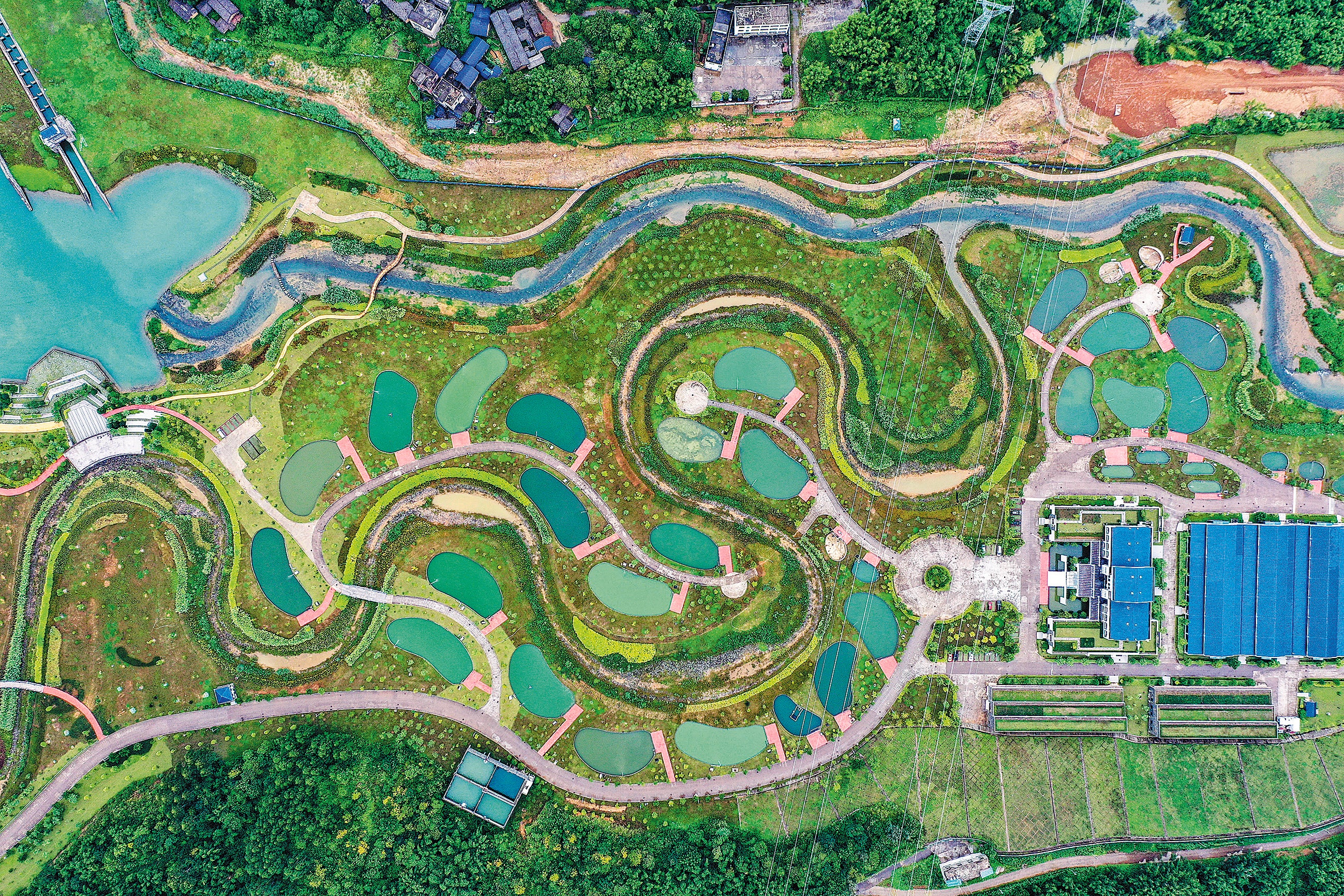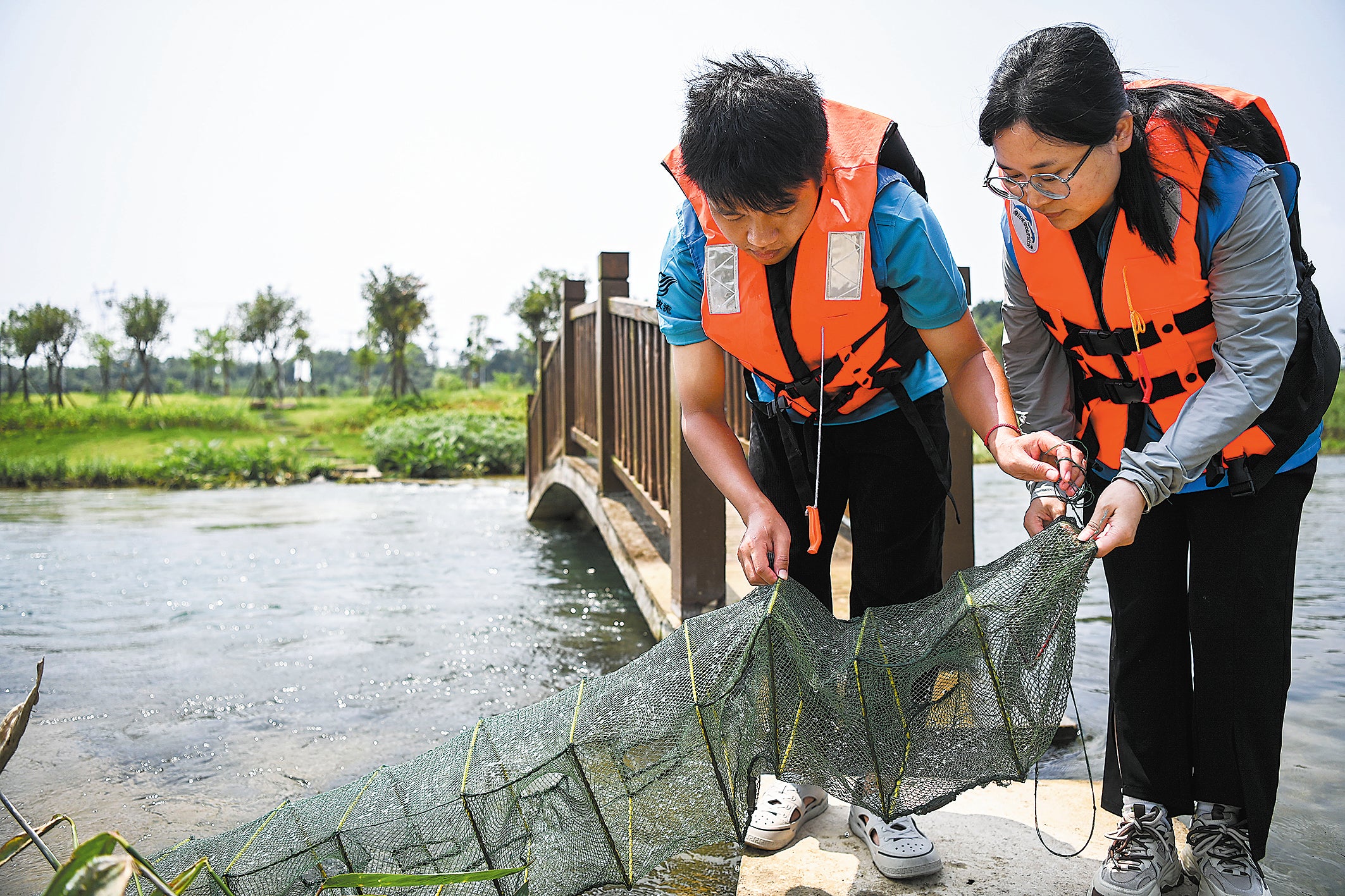Conservation protects fish stocks in Guangxi
THE ARTICLES ON THESE PAGES ARE PRODUCED BY CHINA DAILY, WHICH TAKES SOLE RESPONSIBILITY FOR THE CONTENTS

Zhang Jiajun, the assistant director of the Hongshui River Conservation Centre for Rare Fish, is embracing his busiest time of the year.
Split into two shifts, he and his six-member team have to live in their office from March to July.
“We are especially busy in April and May. For several months, I am barely home for more than three days,” the 33-year-old said.
The Hongshui is a major river in South China’s Guangxi Zhuang autonomous region and a main tributary to the Pearl River. After joining the Liujiang River in Guangxi, it is called the Qianjiang River, which powers the 1.6-gigawatt Datengxia Gorge Water Conservancy Hydropower Project in Guiping, Guangxi, that came online last year.
For Zhang, the busiest season means that he has to make sure the rare fish conservation centre’s stocks of fish fry are regularly fed in order for them to be ready for release back into their natural habitat.
The fish have to be fed every two to three hours, and it is intense work, with Zhang claiming it’s the reason for his thinning hair.
Stretching 410 miles, the Hongshui spans Guizhou province and Guangxi, but as it is located in the Pearl River Basin it falls under the jurisdiction of the Pearl River Water Resources Commission.
With the hydropower project creating tangible changes to the river ecosystem, the centre, established in March last year, is focused on ensuring that the ecosystem not only survives but prospers in its new form.
The centre is part of a series of measures introduced along with the hydropower project to protect the existing ecosystem.

Other measures include two enormous “fish ladders”. They are a series of artificial structures — for example, connected artificial lakes and ponds that, depending on the flow of the water, allow fish to navigate the dammed sections of the river either upstream or downstream. In addition to the “ladders”, there are also two fish stocking stations, four floating artificial fish habitats and one artificial spawning ground.
Altogether, the scale of the system outpaces similar ecosystem-protecting efforts in any other water conservancy projects, according to Guangxi Datengxia Gorge Water Conservancy Development Co, the project’s builder and operator.
“While enhancing the management of water resources and the control of water-related disasters to benefit mankind, the construction of the Datengxia project has also fully considered the overall natural environment and the reproduction and thriving of aquatic organisms such as fish,” said Deng Xunfa, chairman of the Datengxia company.
Launched in 2014, the project is a crucial part of the country’s water network to control floods, facilitate shipping, generate electricity, provide irrigation and enhance the water supply. Its main structure was completed in September.
“In its short history, the centre has already made some progress in biodiversity conservation,” Zhang said.
He said, to date, the centre has collected about 4,600 fish of rare species for protection, including spotted longbarbel catfish and white cloud mountain minnow, both of which are under second-class State protection, and Acrossocheilus iridescens longipinnis, a species of cyprinid fish.
Breakthroughs have been made in breeding white cloud mountain minnow and Acrossocheilus iridescens longipinnis, with 200 and 10,500 hatched, respectively, he said.
“We screen for species under threat first and then make them priorities of our breeding efforts,” he said.
While the breeding technologies the centre develops will be shared with its member institutions, Zhang said the fish fry it cultivates will be freed into natural water bodies.
The efforts aim to enrich populations of fish species and enhance fish biological diversity in the river basin, he said.
